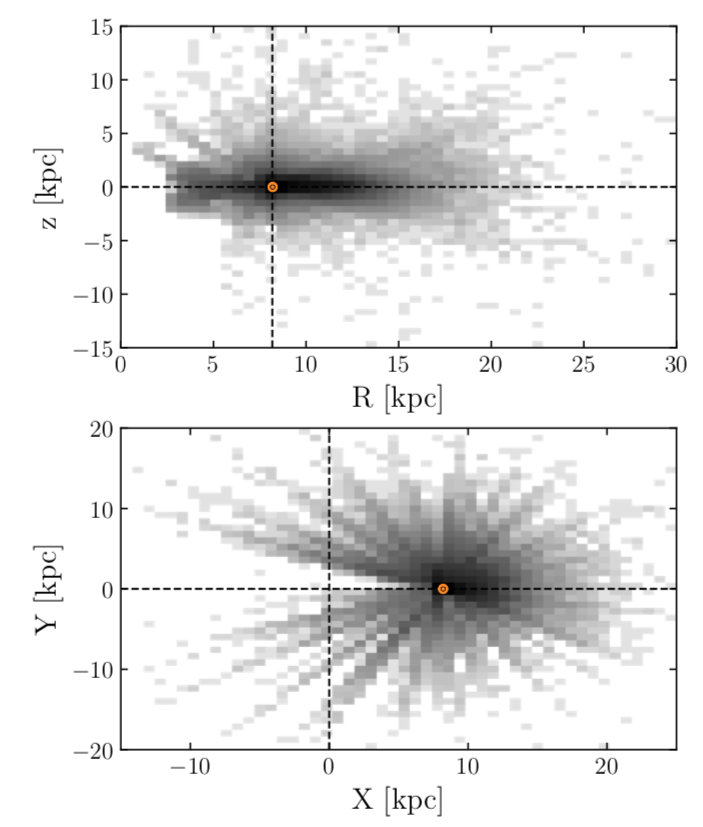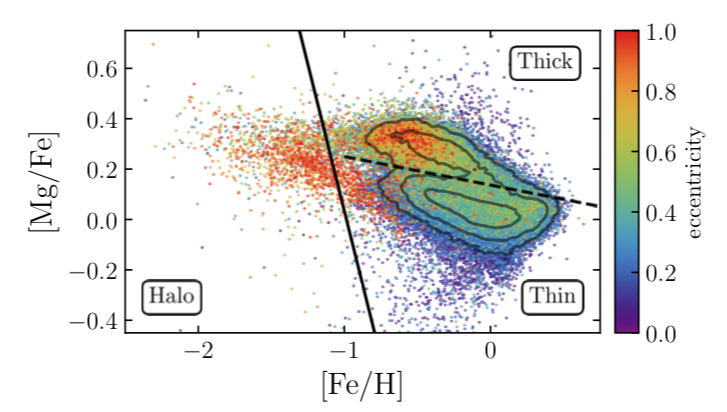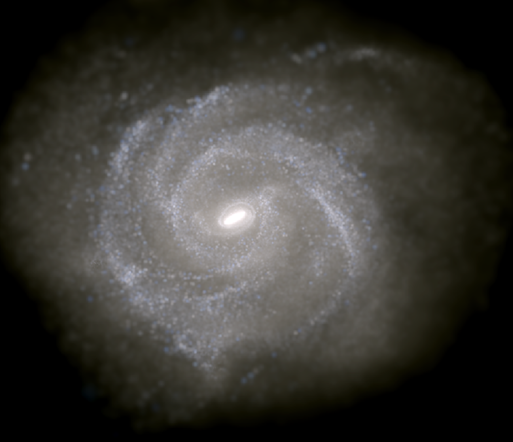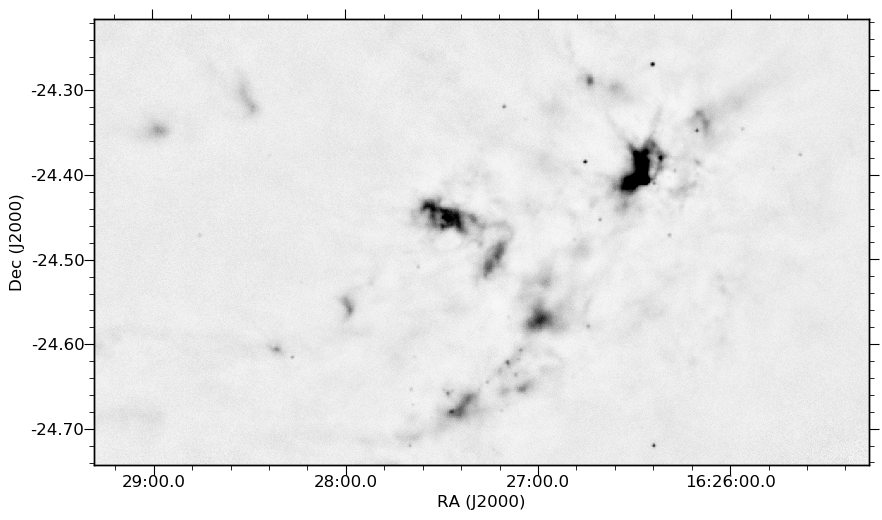
Research
My main research interests currently lie in the field of galactic dynamics and galactic archaeology, specifically in the Milky Way. I have also been involved in projects in tidal globular cluster disruption. Please see the links at the bottom of this page to my arXiv, ADS, and github pages where you can find publications and code.
Milky Way Dynamics & Evolution
It's a core feature of the Lambda-CDM cosmological paradigm that structure is arranged hierarchically, and galaxies like the Milky Way grow in large part by accreting smaller stellar systems like dwarf galaxies and globular clusters. Recently, astrometry from the Gaia space telescope has revealed that the stellar halo of our Galaxy contains a myriad of stellar populations with unique kinematics, many the leftovers of past mergers, a reflection of the cannabilistic nature of our Galaxy. I use data from Gaia and ground-based spectroscopic surveys such as APOGEE to study the largest of these remnants, Gaia-Enceladus, or the Sausage. Below is an example of some of the Gaia-APOGEE data I use, shown as 2D histograms in galactocentric coordinates. The orange dot shows the location of the Sun. The uneven distribution of the data is caused by APOGEE, which only observes stars of certain brightnesses, at certain locations on the sky. We work hard to correct for these effects when modelling the properties of stellar populations.

APOGEE provides spectroscopic data, which may be used to determine the chemical composition of the stars it observes. Stars located in different parts of the Galaxy, which originated under different conditions, have different abundances. Below is the Magnesium and Iron relation, stars in the three main components of our galaxy separate nicely in this space.

I'm also interested in using simulations to learn more about the impact of mergers on Galaxies like the Milky Way. I use the Illustris-TNG suite of cosmological N-body simulations to study Milky Way analogs, simulated galaxies which look very much like our own. I look at analogs which also experienced major collisions with other galaxies in their past, and try to leverage that information to learn more about the history of our Milky Way. Below is an image of an analog simulated galaxy, it looks surprisingly real.

Tidal Disruption of Globular Clusters
Stellar streams are formed when a large, gravitationally dominant galaxy such as the Milky Way accretes a smaller system such as a globular cluster or a dwarf galaxy. Differential tidal forces overcome the binding energy of these systems, tearing them apart and stretching them into arcs that can wrap around the galaxy. One such stream is the recently discovered Ophiuchus stream, which is passing directly over the galactic bulge. I have been using N-body simulations to study both the history, and the progenitor system of this stream. Check out the movie I made of it's orbit:
Stellar streams are key tools in the study of galactic astrophysics, as they provide important kinematic information that can be used to elucidate the shape and magnitude of the Milky Way's gravitational potential. They can also be used to study the abundance and properties of dark matter substructure that is predicted to be ubiquitous throughout the halos of large galaxies. Furthermore, the study of tidal interactions with N-body simulations can shed light on the nature of globular clusters with high mass to light ratios as well as dwarf galaxies with peculiar kinematic properties.
Star Formation in Molecular Clouds
Stars begin their lives in turbulent clouds of gas and dust many thousands of times the mass of our sun. Within these clouds, small, localized overdensities may develop which form the gravitational seeds of future stars. Some of these dense cores, as they are known, may become dynamically unstable, and collapse to begin forming a protostar. Submillimeter and radio observations allow us to probe the youngest, most embedded among these objects by detecting thermal emission from the dust in their envelopes. Below is an image of the Rho Ophiuchus molecular cloud complex. The darker areas show us the densest parts of the cloud where many stars are actively forming.

I am a part of two major studies that seek to probe these dense cores: The JCMT Gould Belt Survey (GBS) and the JCMT Transient survey. With data from the GBS, I worked on a project that searched for mass segregation in clusters of dense cores in the nearby Orion molecular cloud. We demonstrated detection of statistically significant levels of mass segregation that could not be explained by dynamics alone. This result, which formed the basis of my first lead-author paper, has implications for the theory of clustered star formation. The goal of the JCMT Transient survey is to monitor the brightness of nearby protostars on a monthly cadence over 3 years. The accretion of matter onto a protostar contributes to a large fraction of its observed flux. By precisely measuring protostellar fluxes over long baselines we can begin to understand how the accretion rates of young protostars might change in response to feedback or dynamical effects.